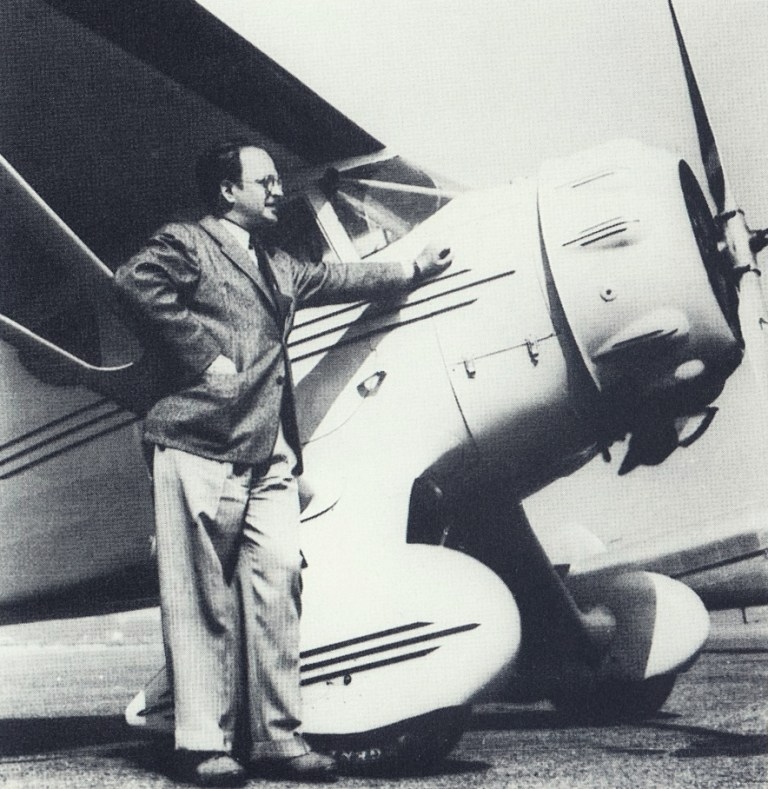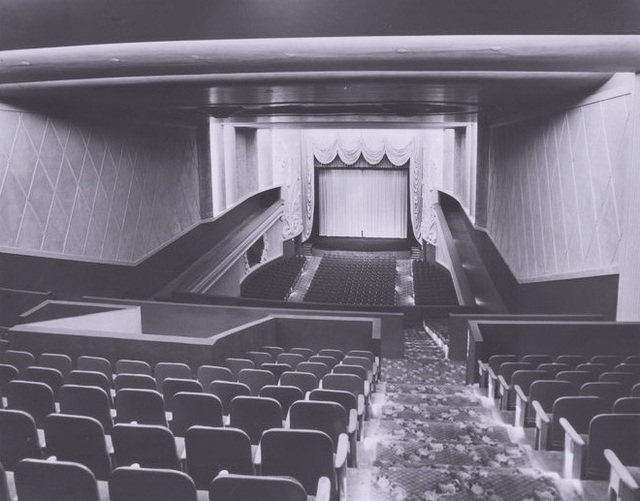| City/Town: • Miami |
| Location Class: • Commercial • Theatrical |
| Built: • 1946 | Abandoned: • January 8, 2021 |
| Status: • Abandoned |
| Photojournalist: • David Bulit |

History of the Miami Theatre
Located in downtown Miami, between such historic structures as the Shoreland Arcade and the Alfred I. Dupont Building, one might not think that a dilapidated shopping mall is historic as well. Many may not know it, but the former 777 International Mall, located at 145 East Flagler Street, was first built between 1946 and 1947 as the Miami Theatre for the Wolfson-Meyer Theater Company’s movie theater chain.
Wolfson-Meyer Theater Company
The Wolfson-Meyer Theater Company, later known as Wometco, was founded in 1925 by Mitchell Wolfson, a member of the Wolfson family that founded the Wolfsonian Museum and for whom the Wolfson Campus is named, and his brother-in-law, Sidney Meyer. Construction began on a state-of-the-art theater in downtown Miami, known as the Capitol Theatre, featuring an early form of air conditioning that consisted of huge fans sending out “currents of refreshing air” that had been forced through a spray of ice-cold water. Although it was rather rudimentary, this system was able to keep the building’s interior at a consistent 70 degrees.
Wometco went on to build many other theaters in South Florida, including the Lincoln Theatre in South Beach and the Cameo Theatre in Miami Beach. Wometco would go on to build the company into a business conglomerate, founding Miami’s first television station in 1949, WTVJ, and operating it out of the Capitol Theatre, which had been converted for television. The company at its peak owned and operated the largest chain of movie theaters in South Florida, six television stations, a cable television company, a soft drink bottling franchise, and tourist attractions, including the Miami Seaquarium.
The company’s downfall would come when its founder, Mitchell Wolfson, died on January 28, 1983. Wolfson left no succession plans in his will, so it wasn’t long before Wometco was bought out in 1984 by investment firm Kohlberg Kravis Roberts in a deal worth $1 billion, the largest corporate buyout to that date. The company’s assets were slowly sold off throughout the 1980s and 90s, and today it only owns a franchise of Baskin-Robbins/Dunkin Donuts stores in Miami, the Caribbean, and Puerto Rico.

The Miami Theatre
The Miami Theatre opened on April 18, 1947, with Dick Haymes in “Carnival in Costa Rica”. Before its construction, Wometco operated another theater by the same name at 265 East Flagler Street. The company chose the name of the new theater because “the name ‘Miami’ should be on the city’s finiest theatre.” That theater was subsequently renamed Town Theatre, and showed many ‘B’ and exploitation films during the 1950s.
The three-story Streamline Moderne style building featured one screen and an auditorium that seated approximately 1,850 patrons. It was designed by prolific theater architect S. Charles Lee in collaboration with Robert E. Collins. Collins was a local theater architect whose best-known works include the Tower Theatre, one of Miami’s oldest cultural landmarks; the Cameo Theatre, a major venue for punk and hardcore acts in the 1980s; and the Lincoln Theatre in association with noted cinema and theater designer Thomas W. Lamb.

“Owned and operated by Wometco Theatres, a local organization… home of all first-run 20th Century-Fox, Universal-International, Columbia and United Artists pictures… Air Conditioned… push-back seats… perfect vision and sound… Huyler’s famous restaurant is a part of the Miami… entrance from the lobby and mezzanine.” Abandoned Atlas Archives
S. Charles Lee, the Theater’s Architect
The Miami Theatre’s lead architect, S. Charles Lee, was one of America’s most prolific and innovative theater architects, best known for shaping the look of movie palaces and neighborhood theaters during Hollywood’s golden age. Throughout his career, he designed over 300 theaters across the United States, leaving an indelible mark on the architecture of cinema.
Born Simeon Charles Levi in Chicago on September 5, 1899, Lee studied architecture at the Armour Institute of Technology (now Illinois Institute of Technology). After graduation, he gained practical experience in Chicago before relocating to Los Angeles in 1922—a move that coincided with the rapid expansion of Hollywood’s film industry and the accompanying demand for glamorous venues.
Lee quickly established a reputation for his flair in theater design. Among his most famous works are the Los Angeles Theatre (1931), a lavish French Baroque–inspired palace built for showman Sid Grauman; the Tower Theatre (1927), the first theater in Los Angeles designed specifically for “talkies”; and the Fox Wilshire Theatre (1930, now the Saban Theatre) in Beverly Hills. His portfolio extended far beyond Southern California, including theaters in Texas, New Mexico, and throughout the western U.S.
Stylistically, Lee embraced and helped popularize Art Deco, Moderne, and Streamline Moderne aesthetics in theater design, blending ornament with cutting-edge engineering and acoustics. He was also a pioneer in adapting theaters for suburban audiences, creating designs that balanced efficiency with elegance.
In the later decades of his career, as movie palaces declined, Lee shifted toward industrial and commercial projects, but his theaters remained his defining legacy. Many of his surviving buildings are now protected landmarks, celebrated as architectural treasures of America’s cultural history. S. Charles Lee passed away in Los Angeles in 1990 at the age of 90.

Architecture and Design
Architecturally, the Miami Theatre auditorium was designed to counteract the impression of narrowness. Its long interior was visually broken by a series of neon light coves running above traffic ledges on each side and continuing across the ceiling. These ledges, extending from the balcony to the front wall, not only enhanced the design but also provided direct egress to the street behind the theater, meeting code requirements. At the rear, both ramps and staircases facilitated movement.
Seating featured two types of chairs: American special spring-construction models in the loge section at the front of the balcony, and Kroehler push-back chairs throughout the rest of the auditorium, all upholstered in mohair and spaced at 34 inches back-to-back. The balcony rose above a mezzanine lounge, where a central staircase from the main foyer directed traffic upward. This lounge area was further integrated with the second-level restaurant, blending circulation with leisure space.

Interior decorations were carried out by Frederick T. Rank, a notable interior designer who was active in Miami and Miami Beach during the 1950s and 1960s, known for his work in interior decoration and furniture design.
The theater’s interior decoration was designed as if patrons were in an aquarium with painted murals by local artist F. M. Bergere. Wavy walls were decorated in shell and sea-life motif reliefs, and elongated cascading ceilings. Other features included Huyler’s Restaurant, a candy shop, and a diner chain based out of New York, which occupied three floors of the theater, plus the air-conditioned basement that was used as the kitchen. The restaurant could be entered through an entrance on East Flagler Street or from inside the lobby.



Capital Mall, Puerta de las Americas
The Miami Theatre operated until 1978, when Wometco sold it to Oscar Sklar and his associates, who had the building gutted and reconstructed in 1979 into a shopping mall named Capital Mall, Puerta de las Americas (Door to the Americas). While Sklar appreciated the theater’s interior design, the building was in a prime location with a high volume of tourism, domestic and international trade, and commercialism. The move was also likely inspired by the success of the Galleria International Mall, which transformed the old Paramount Theatre into retail space.
777 International Mall
The property was later sold to Marlon Avneri for $3 million in 1998, renaming it 777 International Mall. In 2011, Avneri came across some vintage photographs of the Miami Theatre in its prime and wanted to restore the building’s facade to its original grandeur. After contacting Sklar and with the city’s approval, the building facade was mostly restored and is now reminiscent of the former Miami Theatre.
In 2014, billionaire developer Moisha Mana purchased the property for $14.5 million. It was one of many purchased by Mana throughout the years as he had become the biggest property owner in both downtown and Wynwood. By 2019, according to The Real Deal, he had “amassed nearly $375 million worth of properties downtown totaling over 1.3 million square feet of buildings on about half a million square feet of land.”
Mana Contemporary Miami
In 2017, he renamed the 777 International Mall to Mana Contemporary Miami, 777 Mall, and allowed artists and art organizations to rent out space in the dilapidated structure. According to the Miami New Times, the building served as the organization’s base in Miami and was modeled after Mana Contemporary’s headquarters in New Jersey and its Chicago campus, including exhibition spaces, artist studios, and a broad clientele of local creatives. In three years, 777 Mall “became an integral part of Miami’s underground culture, supporting an underserved section of the arts community.”
In March 2020, the pandemic struck, forcing it to shut down to comply with county regulations. While tenants didn’t have to pay rent, it was a huge blow to the community as everything was put into storage while tenants hoped for its eventual reopening. Many tenants claim they had no communication with Mana since March until they received an eviction notice stating that 777 Mall would “permanently close effective January 8, 2021. You will need to have moved out of your studio before this date.” The reason for its closure was due to the number of major repairs needed to be able to reopen safely was cost-prohibitive. The building’s future remains uncertain.

















